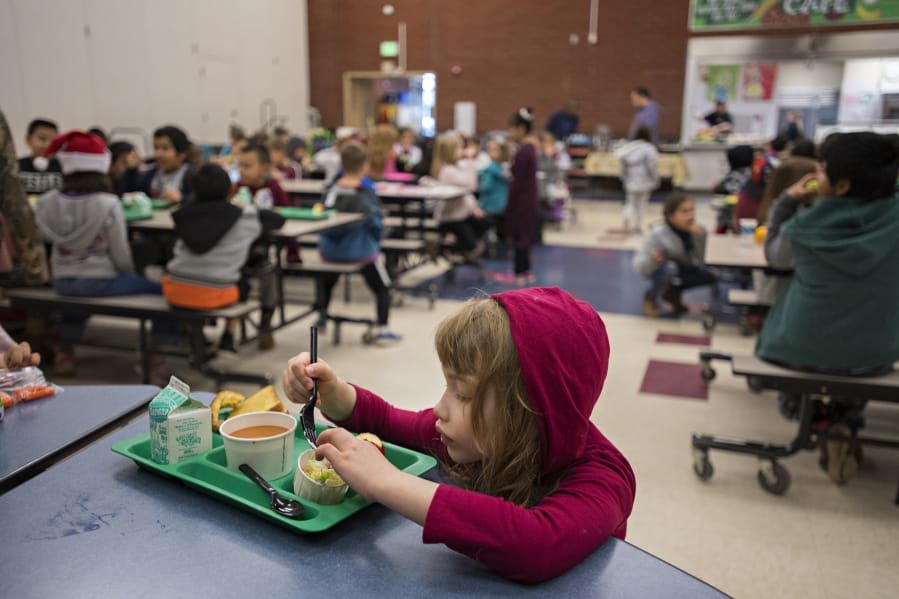More than a dozen Clark County schools are eligible for a federal program that would allow them to feed every one of their students for free.
None participate.
The Vancouver and Evergreen school districts combined have 17 schools that qualify for the Community Eligibility Provision, which is funded by the United States Department of Agriculture’s Child Nutrition Program. The program, which serves about 300 Washington schools, is seen as a way to support low-income students.
Local district officials, however, say the program could come at a cost to other pockets of funding designed to serve low-income students. Districts may also be on the hook for covering the cost of meals, which would normally be reimbursed by the USDA or covered by families.
“We review this option every year but ultimately are dissuaded every year by the same limitations of the program,” said Brett Blechschmidt, Vancouver Public School’s chief financial officer.




